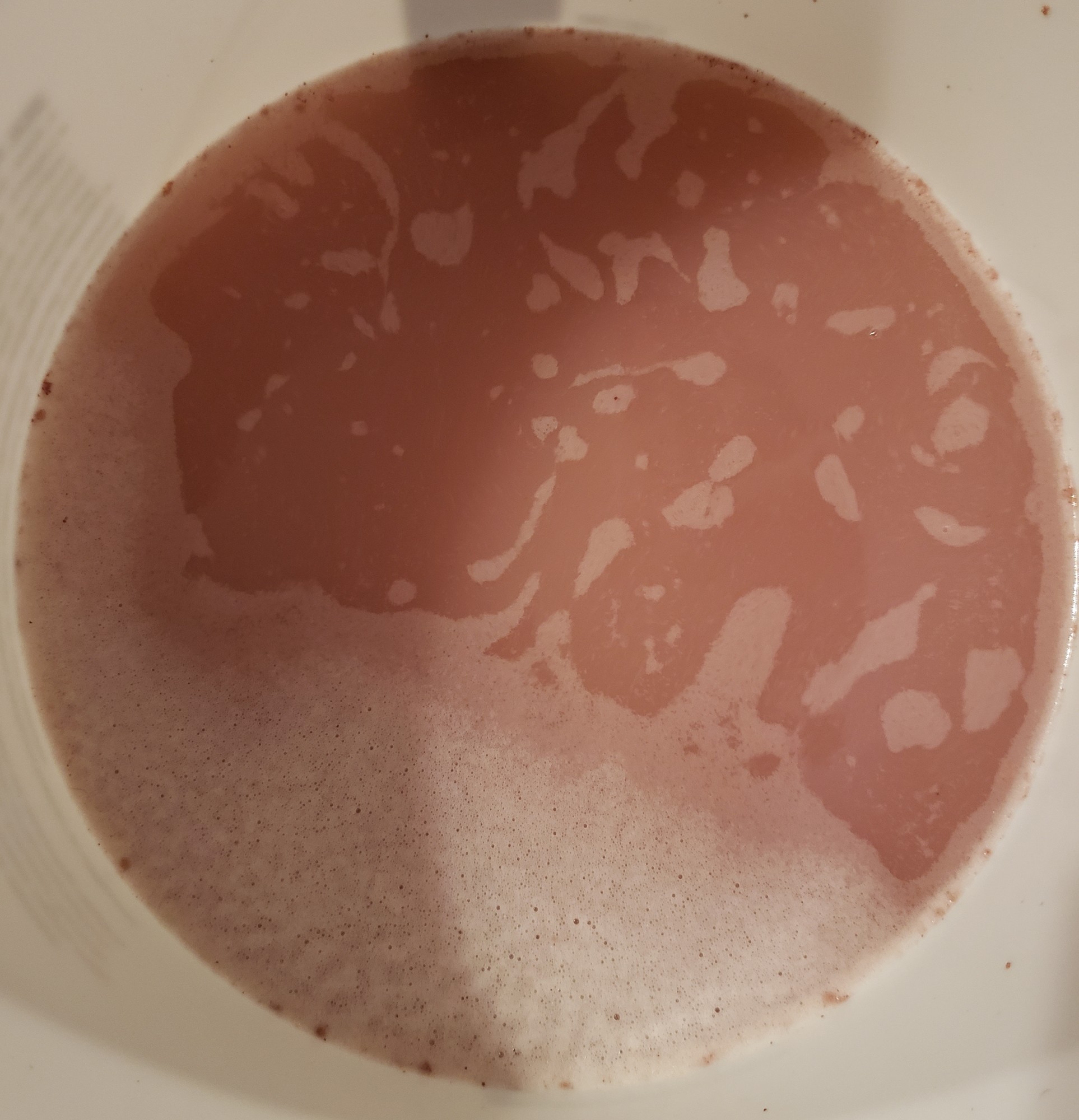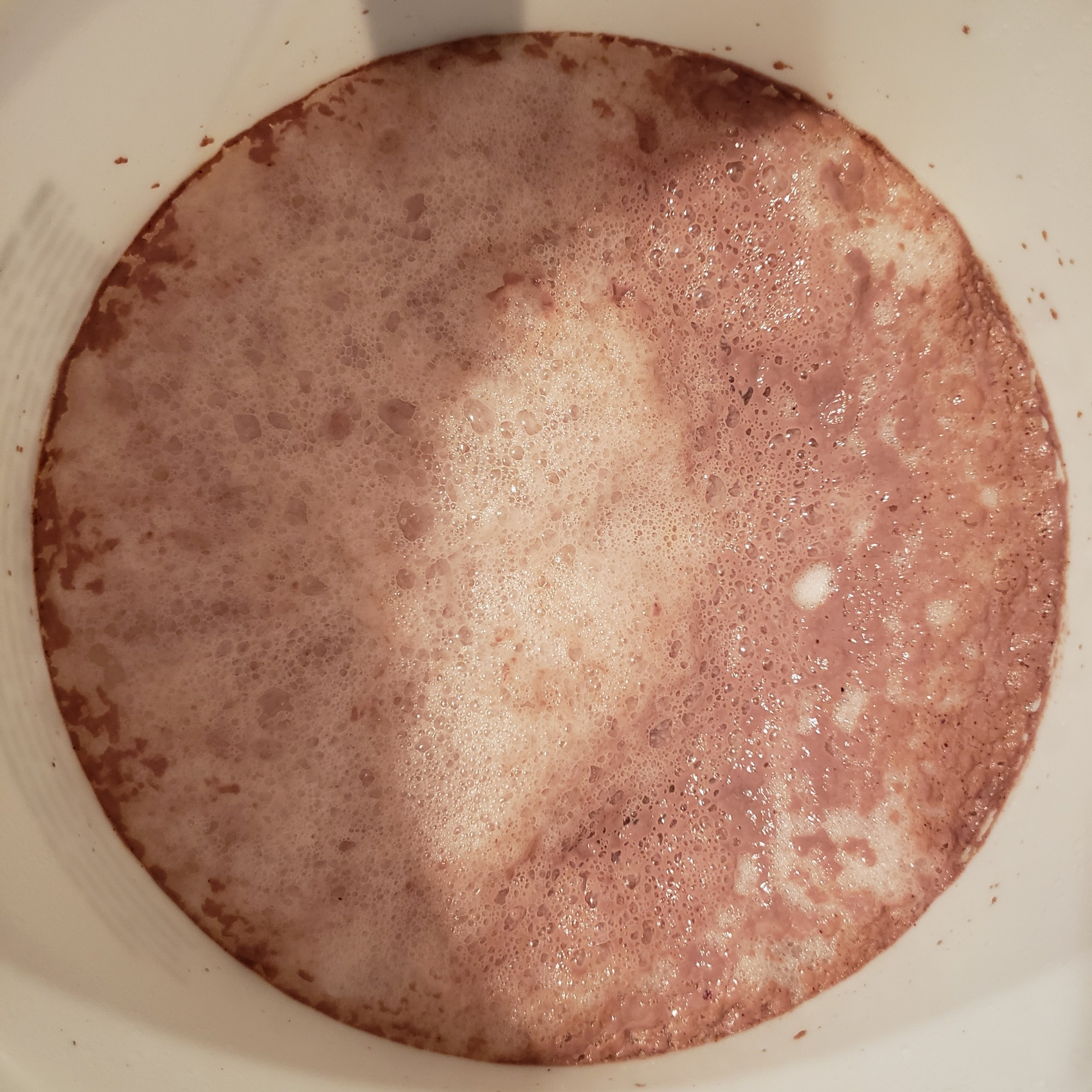
Summer calls for Skeeter Pee: crisp, clean, and citrusy. Ever since I made our first batch of Skeeter Pee and realized what a delightful hot weather libation it is, I’ve been pondering variations on that theme: what other flavors could be incorporated into the basic Skeeter Pee recipe for enjoyable results? The motivation for the second version of the beverage was having a couple of bottles of lime juice sitting in the fridge…so why not lemon-lime this time?
It began using the basic Skeeter Pee recipe…making the invert sugar with some of the lemon juice, letting it cool, and adding it to the primary fermenter with about 2/3 of the total juice. Tannin and yeast nutrient (and energizer, if you have it) are also added, and it’s allowed to sit for about 48 hours with daily whippings (seriously, you whip air into it to help dissipate preservatives, and the oxygen helps facilitate the ferment).
Once the 48 hours elapses, the yeast slurry is added to begin the actual fermentation process. It’s so much easier when you have yeast slurry on hand – with the last batch that I made, I had to use dry yeast and gradually acclimate it to the acidic medium over the period of a couple of days; with slurry (lees) from a previous wine’s initial racking, the yeast is already strong and active and it goes to work right away (and this slurry had been in the refrigerator for several months, too). Another bonuses to using the yeast slurry: you’re not using any “new” yeast from a packet, and the wine from which the slurry was harvested will impart some flavor to the finished beverage. With this batch, I used a mixed berry wine slurry.
To my relief, the ferment was immediately active – more active, in fact, than most of the batches of non-citrus wines I’ve made (and citrus has a reputation for being difficult to ferment due to the acidity). While it initially just “boiled” beneath the surface, a foamy “head” has now appeared atop the liquid. Go, microbes!

I ended up using about a 60/40 split of lemon juice to lime juice, based on research that indicated that others who had made lemon-lime Skeeter Pee had either not enjoyed the finished wine made with a higher percentage of lime juice or had not noticed an appreciable difference in flavor in Skeeter Pee made with more (or only) lime juice (more: Wine Making Forum: Skeeter Pee Using Lime Juice); the consensus seemed to be that a 2:1 ratio of lemon juice to lime was preferable. So why did I choose to use more lime juice? Because I had more of it on hand.
Soon, I’ll rack this to a clean carboy to finish its ferment. I also elected to only make 3 gallons this time instead of the 5 I made last time – primarily because a 3 gallon glass carboy is much easier to clean and handle when full. It also means that I can continue experimenting with different recipes…next batch might just be 1 gallon!
So what’s next on the winemaking horizon? Maybe a wildcrafted mead. Stay tuned for more!

Comments are closed.